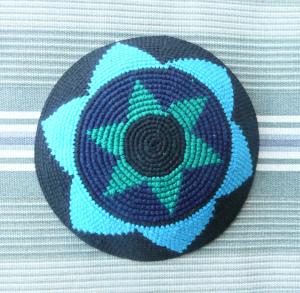
This week, on his “WTF” podcast, comedian Marc Maron conducts a long and thoughtful interview with actor and screenwriter Jason Segel (Freaks and Geeks, How I Met Your Mother, Forgetting Sarah Marshall, The Five Year Engagement, The Muppets). Segel has taken on an ambitious role, playing writer David Foster Wallace in The End of the Tour, a film opening in theaters today. Wallace wrote the iconic, postmodern novel Infinite Jest in 1996, and committed suicide in 2008.
In the first half of the interview, Segel speaks at length about his childhood growing up with a Jewish father and a Christian mother, and his education in both religions. His parents sent him to a Christian school during the day, and to Hebrew school at night. As he describes it, “At Christian school you’re the Jewish kid, and at Hebrew school you’re the Christian kid. I think that’s the nature of groups,” he said. “And so everyone wants to compartmentalize people. And I think I decided at that point, like OK, its just me versus the world kind of.” Segel questions the decision made by his parents: “Neither of them are religious. So they made this decision that they were going to let me decide, which is like the dumbest thing you can do for a kid.
I write a lot about the idea that there are both challenges and benefits to growing up as part of an interfaith family. And, I write about the linked idea that whether your parents choose one religion, or both, or none, or a third religion, or all religions, there are going to be both challenges and benefits to each of those pathways. For many of us who grew up in earlier generations, when interfaith marriage was less common, and less tolerated, the challenges sometimes seemed more obvious than the benefits. But there is a danger in projecting those negative experiences into the present and future, when our children are growing up in a very different, much more fluid and flexible religious landscape.
So, I was frustrated to see that Haaretz, Israel’s oldest daily newspaper, picked up the podcast story and ran a piece today, leading with the idea of Segel growing up “half-Jewish and complete outsider” (their words). Clearly, by leading with this idea, the intent was to use Segel’s story as a cautionary tale, warning parents away from dual-faith education, or from interfaith marriage in general. So, I would like to make a few points in response:
- I agree that it is not good to put pressure on interfaith children and make them feel they are uniquely burdened with the task of deciding on a religion. Those of us in interfaith families communities dedicated to raising children with both religions teach our children that they are interfaith, because they are born into interfaith families. And we teach them that all human beings grow up to decide on their own religious beliefs, practices, and affiliations.
- Yes, it is a problem when religious communities exclude or marginalize interfaith kids. We need to continue to work on changing these attitudes and policies if we want interfaith families to remain engaged with religion, and to find supportive communities. And in an era when we have interfaith families are everywhere, parents and teachers need to be educating all children in order to eradicate religious bullying and put more emphasis on compassion and the Golden Rule.
- Yes, it is a problem when interfaith kids grow up without any interfaith peers. But today, 25% of intermarried Jewish parents are raising children “partly Jewish and partly something else.” Progressive Jewish communities are filled with interfaith kids, many of them getting interfaith educations. So these kids look around and see a lot of other interfaith kids just like them. They don’t necessarily feel marginalized anymore. So those of us, like Segel, like me, who grew up in earlier generations, may find our experiences are not that relevant to parents making decisions about children born today.
- Yes, it is essential for interfaith children to have support for integrating two (or more) cultures in their families, rather than bouncing back and forth between two separate religious worlds. Interfaith family communities provide that opportunity, in a context where all the kids are being raised with both religions. Going forward, we need clergy to work together, across religious boundaries, to share in collaborative support of interfaith families, rather than competing for souls and bodies in the pews. And this collaborative support is important, no matter what decisions those families make about religious labeling or religious education.
- Segel tells the tragicomic story of being asked to stand up at his Christian school and explain his bar mitzvah, and then getting beat up the next day. In contrast, in Being Both, I tell the more recent story of Jared McGrath, an interfaith child raised in an interfaith families community, who attended Catholic school, and invited his classmates to hear him read from the Torah when he turned thirteen. It was a moving and educational experience for his classmates, and his extended family, and for Jared. No one got beat up.
- Haaretz neglects to mention that in the interview, Segel speaks with great affection and appreciation about the fact that his parents are still together, that they have family get-togethers, that they are coming to his movie premiere. In my book, this is a successful interfaith family.
Susan Katz Miller’s book, Being Both: Embracing Two Religions in One Interfaith Family is available now in hardcover, paperback and eBook from Beacon Press.

